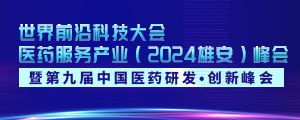| 药品名称 |
Technetium Tc-99m oxidronate
|
| 分子靶点 |
Neuronal acetylcholine receptor; alpha3/beta4;Neuronal acetylcholine receptor; alpha4/beta2
|
| 药物类型 |
Small Molecule
|
| 研发阶段 |
Approved
|
| 药物描述 |
Technetium Tc-99m oxidronate, also known as 99mTc-methylene diphosphonate, is a radiopharmaceutical. A radiopharmaceutical is defined as a medicinal formulation containing radioisotopes that are used in major clinical areas for diagnosis and/or therapy.[2] The radiopharmaceuticals based on technetium-99m are widely used for diagnostic purposes because 99mTc has a versatile chemistry which allows it to produce an extense variety of complexes with specific characteristics.[3] These complexes are formed by the binding of 99mTc to metal atoms of an organic molecule. The group oxidronate falls into the category of diphosphonates whose structure allows them to bind to calcium.[4] Thus, technetium Tc-99m oxidronate is a powerful detection tool for abnormal osteogenesis by skeletal scintigraphy.[5] It was developed by Mallinkrodt nuclear and FDA approved on February 18, 1981.
|
| 结构式 |
 |
| 药物别名 |
99mtc-HDP;Oxidronic acid 99mtc-complex;Technetium (99mTc) oxidronate;Technetium 99mtc oxidronate;Technetium Tc 99m oxidronate
|
| 治疗类别 |
Diagnostic Radiopharmaceuticals;Radioactive Diagnostic Agent;Radiopharmaceutical Activity;Skeleton;Technetium (99Mtc) Compounds
|
| UNII号 |
MG4KI49HHJ
|
| CAS号 |
72945-61-0
|
| 分子量 |
290.906
|
| 分子式 |
CH6O7P2Tc
|
| 适应症 |
Technetium Tc-99m oxidronate is indicated in adult and pediatric patients to be used in skeletal imaging for diagnosis of areas that can present altered osteogenesis. When administered intravenously, it is able to generate a clear image of the bones which allows the physician to diagnose any bone problem.[6] It is important to point out that this drug has to be manipulated only under the service of a nuclear specialist.[5] The approved indications for a bone scan are 1) visualization of tumor metastasis in bone, 2) osteomyelitis, 3) fracture, 4) stress fracture, 5) avascular necrosis, 6) osteoporosis and 7) prosthetic joint evaluation. From all the major indications, the detection of a metastatic disease is the most common because it presents a 95% of sensitivity and lesion detection can be done 6 months earlier than with X-ray studies.[4]
|
| 药效学 |
The technetium is generated in a molibdene generator. Technetium Tc-99m presents a reduction of gamma emission after 6 hours and it is considered a quasi-stable molecule. The visualization of bone lesions is possible since there is an altered uptake in areas of abnormal osteogenesis. The principal photon used for detection is the gamma-2 with an energy of 140.5 keV. Its use for bone examination should be performed 2 hours after initial injection with a recommended activity on the range of 370-740 MBq.
|
| 作用机制 |
The exact mechanism for bone uptake of technetium Tc-99m oxidronate is unknown. The most accepted mechanism is the localization of 99m-Tc on the surface of hydroxyapatite crystals of bone by chemisorption. Chemisorption is explained as a type of adsorption that involves a chemical reaction between the surface and the adsorbate in which new strong interactions form electronic bonds at the adsorbent surface. The presented chemisorption are regulated by the blood flow and blood concentration because it restrains the delivery of the agent in the uptake sites.
|
| 吸收 |
Technetium Tc-99m oxidronate is rapidly absorbed and cleared from blood plasma to reach the skeleton. After 27 min of intravenous administration, a range of 45-50% of the technetium Tc-99m oxidronate is accumulated in the skeleton, reaching maximum accumulation at 1-hour post injection and remaining constant until 72 hours postinjection.
|
| 分布量 |
The distribution of technetium Tc-99m oxidronate at 1-hour post injection is mainly in the bones and secondary in the liver and kidneys.
|
| 蛋白结合 |
The protein binding has been reported to be around 20-30% after 2-3 hours of intravenous administration.
|
| 代谢 |
Technetium Tc-99m oxidronate is a diphosphonate. There have been reports showing that diphosphonates form very stable Tc(IV) complexes which provide them with a very high in vivo stability and a very low degradation.
|
| 排泄 |
It is recommended to empty bladder completely just prior to technetium Tc-99m oxidronate administration. It is as well recommended to drink abundant water and to empty bladder as often as possible to reduce radiation exposure in the bladder wall. The total radioactivity in blood between 5 min and 24 hours goes from 40% to 2.3% respectively. Technetium Tc-99m oxidronate whole body retention after 24 hours is a ratio of 36.6% which indicates that this drug, unlike other bone radiopharmaceuticals, presents a greater uptake. The glomerular filtration of technetium Tc-99m oxidronate can reach a 60% of the administered dose after 6 hours of the initial dose. The cumulative activity excreted in the urine after 24 hours is of approximately 59% suggesting a ratio of femur-to-muscle of 35.
|
| 半衰期 |
The elimination of technetium Tc-99m oxidronate is marked by the presence of three different half-times which are: 1) rapid phase of 3.5 min, 2) intermediate phase of 27 min and 3) slow phase of 144 min.
|
| 清除 |
During the first 24 hours of technetium Tc-99m oxidronate administration, it is observed a rapid clearance from blood and non-osseous tissues. The dosage gets accumulated in skeleton and urine.
|
| 毒理 |
There has not been performed long-term animal studies to evaluate carcinogenic potential or an effect in fertility in males or females.
|
| ATC代码 |
V09BA01
|








